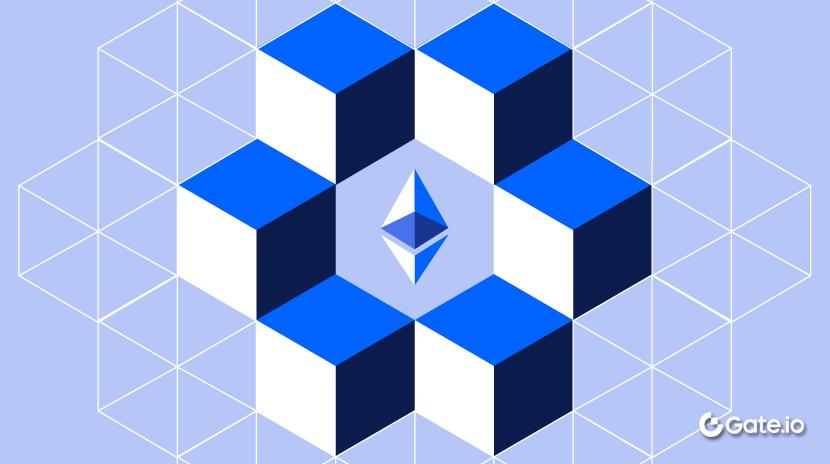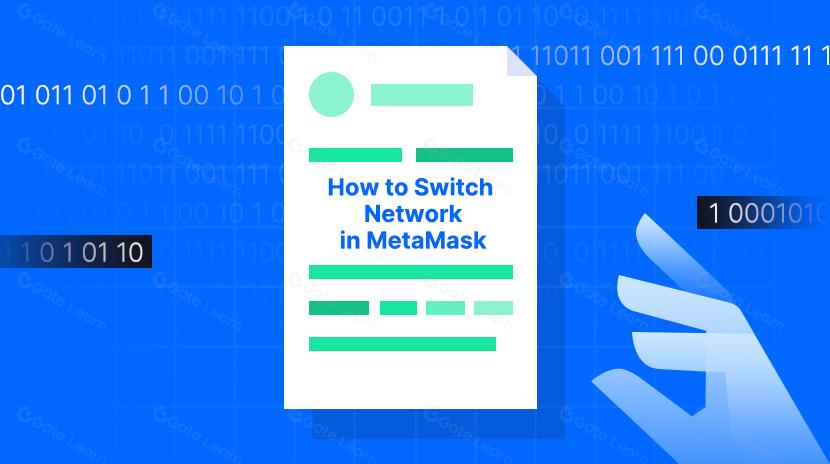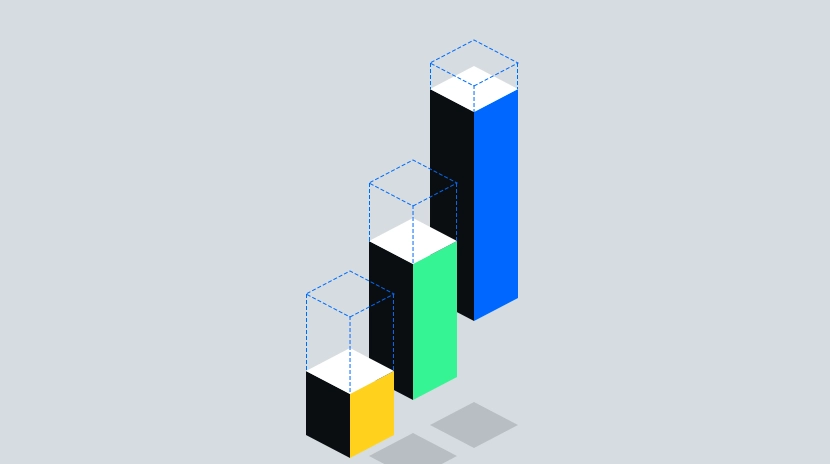¿Qué es PeerDAS?
Visión general
El 13 de marzo de 2024, Ethereum completó la bifurcación dencun, activando oficialmente EIP-4844 (blobs), que proporciona una solución de disponibilidad de datos de bajo costo para las rollups de Capa 2 (L2), llevando la escalabilidad de Ethereum a un nuevo nivel. Sin embargo, el mecanismo actual de blobs todavía requiere que los nodos completos almacenen datos por completo, lo que limita la escalabilidad de la red.
PeerDAS (Muestreo de Disponibilidad de Datos entre Pares), como el próximo paso crítico de optimización, tiene como objetivo reducir la carga de nodos a través de la colaboración en red de pares a pares (P2P) y el muestreo de datos, mejorando la eficiencia de distribución de datos y aumentando el rendimiento de la red.
Vitalik Buterin propuso un objetivo en su publicación X: lanzar la red de prueba Fusaka el día siguiente a la bifurcación dura de Pectra, verificando los nuevos parámetros de blobs (objetivo/límite establecido en 48/72), sentando las bases para el despliegue de la red principal de PeerDAS.

Fuente: https://x.com/VitalikButerin/status/1895863075527700959
¿Qué es PeerDAS?
PeerDAS es una solución de Muestreo de Disponibilidad de Datos (DAS) de igual a igual diseñada específicamente para la escalabilidad de blockchain. Su objetivo principal es permitir a los nodos verificar la disponibilidad de datos sin descargar todos los datos, sentando las bases para futuras actualizaciones como Danksharding. Sus características principales incluyen:
Almacenamiento parcial: Los nodos almacenan solo subconjuntos de datos y verifican la disponibilidad general de datos a través de muestreo.
Distribución P2P: Utiliza redes peer-to-peer para optimizar la distribución de datos, reduciendo los requisitos de ancho de banda y almacenamiento.
Alta escalabilidad: admite cargas de datos a mayor escala, lo que lo hace adecuado para escenarios de alto rendimiento.
Principios Técnicos
La implementación de PeerDAS se basa en coordinar una serie de tecnologías y protocolos. Aquí tienes una visión general de sus principios técnicos principales:
1. Fragmentación de datos y codificación de borrado
Los datos originales (tamaño N) se amplían mediante códigos de borrado (por ejemplo, códigos de Reed-Solomon) para convertirse en k·N (k > 1) y se dividen en múltiples fragmentos más pequeños. Los datos originales aún pueden recuperarse incluso si solo se obtiene parte de estos fragmentos (por ejemplo, m fragmentos, m < k·N). Por ejemplo, con k=2, perder el 50% de los datos todavía es recuperable, asegurando una alta disponibilidad.
2. Muestreo aleatorio y verificación probabilística
Los nodos muestrean aleatoriamente un pequeño número de fragmentos de datos (normalmente unos pocos docenas). Debido a las propiedades matemáticas del código de borrado, si el tamaño de muestreo es suficiente, la completitud de los datos puede confirmarse con una probabilidad cercana al 100%.
Por ejemplo, si se muestrean 30 fragmentos de datos y la tasa de pérdida es inferior a un cierto umbral (por ejemplo, 10%), se puede inferir la disponibilidad general de datos.
3. Distribución y Colaboración de Red P2P
Los fragmentos de datos se almacenan en varios nodos y se distribuyen a través de protocolos P2P (como el gossipsub de libp2p). Cada nodo almacena solo una parte de los datos y proporciona acceso a otros nodos, evitando puntos únicos de fallo y mejorando la eficiencia de distribución.
4. Mecanismo de incentivos
Para fomentar el almacenamiento y compartición honestos, PeerDAS puede incentivar a los nodos a través de recompensas por participación (como una parte de las tarifas de gas de Ethereum). Comportamientos maliciosos (como ocultar datos) podrían resultar en penalizaciones por reducción de la participación, garantizando la estabilidad del sistema.

Fuente: https://medium.com/gaudiy-web3-lab/3ace46a3a9af
Aplicación en Ethereum
PeerDAS fue propuesto por primera vez y ampliamente discutido dentro del ecosistema de Ethereum, especialmente en el contexto del "Sharding" y el diseño de la "Capa de Disponibilidad de Datos" de Ethereum. El futuro plan de ruta de Ethereum (como EIP-4844 y actualizaciones posteriores) planea introducir DAS para mejorar el rendimiento de la red manteniendo la descentralización.
En la implementación de Ethereum de PeerDAS, se utiliza el muestreo de disponibilidad de datos para respaldar el almacenamiento y verificación de datos para Rollups. Por ejemplo:
Apoyo a EIP-4844
EIP-4844 introduce el tipo de datos blob para almacenar datos temporales enviados por Rollups. PeerDAS optimiza la distribución y verificación de datos blob, permitiendo que los clientes ligeros participen descargando solo una pequeña muestra.
Reducir la carga del nodo
Los nodos completos tradicionales deben almacenar todos los datos, mientras que PeerDAS permite a los clientes ligeros verificar los datos de manera eficiente, reduciendo significativamente los requisitos de hardware (por ejemplo, reduciendo el almacenamiento de GB a MB) y mejorando la descentralización.
Mejorando el rendimiento de Rollup
PeerDAS permite a los Rollups enviar más datos en cadena, aumentando el rendimiento y manteniendo costos bajos. Por ejemplo, las tarifas de transacción en Optimism y Arbitrum pueden ser aún más reducidas.

Fuente:https://www.eip4844.com/
Comparación de Soluciones de Disponibilidad de Datos
Además de PeerDAS, existen varias otras soluciones de disponibilidad de datos (DA), cada una con sus propias características de almacenamiento, ancho de banda y eficiencia de verificación. A continuación se muestra una comparación más completa:

Ventajas y Perspectivas Futuras
Implementación a corto plazo: Mejorando la eficiencia de verificación y descentralización
PeerDAS ofrece ventajas significativas, especialmente en la mejora de la escalabilidad de blockchain y la reducción de los costos de operación de nodos. A corto plazo, PeerDAS aporta beneficios en los siguientes aspectos:
1. Mejora de la eficiencia de verificación:
PeerDAS utiliza métodos de muestreo para optimizar la distribución de datos y los procesos de verificación. Los nodos solo necesitan enfocarse y verificar una pequeña parte de los datos, lo que mejora considerablemente la eficiencia de verificación y reduce la latencia durante el proceso de verificación.
2. Mayor descentralización:
Al reducir los requisitos de hardware, más usuarios pueden ejecutar nodos. Según los datos de Etherscan del 17 de marzo de 2025, el número actual de nodos completos es de alrededor de 7,000. PeerDAS podría aumentar potencialmente ese número a decenas de miles. Por ejemplo, al 22 de marzo de 2025, el número de nodos había aumentado a 9,228.

Fuente:https://etherscan.io/nodetracker
3. Costos operativos reducidos del nodo:
Dado que los nodos ya no necesitan procesar todos los datos, pueden reducir el almacenamiento y el uso de ancho de banda, lo que a su vez reduce los costos operativos. Esto permite que más nodos de bajo costo participen en la red, fortaleciendo la descentralización de la cadena de bloques.
4. Seguridad mejorada de la cadena de bloques:
PeerDAS utiliza mecanismos de verificación distribuida y codificación de borrado, aumentando significativamente la dificultad de manipulación de datos. PeerDAS puede prevenir de manera efectiva la pérdida de datos o la manipulación maliciosa a través de la verificación descentralizada de disponibilidad de datos.
Incluso si algunos nodos fallan, el sistema aún puede garantizar la integridad y disponibilidad de los datos a través de mecanismos de redundancia y verificación, mejorando así la seguridad y la resistencia de la red en general.

Fuente: https://etherscan.io/nodetracker
Expansión a medio plazo: Integración y complementariedad con Danksharding
PeerDAS entrará en su fase de expansión a medio plazo a medida que avanza la tecnología, desempeñando un papel más importante en la escalabilidad de la cadena de bloques y la verificación de la disponibilidad de datos. Su relación en evolución con Danksharding es significativa:
1. Verificación más eficiente de la disponibilidad de datos:
A medida que crecen las demandas de tecnología y uso de blockchain, PeerDAS seguirá mejorando la eficiencia de verificación de datos. Los futuros desarrollos pueden incluir estrategias de muestreo y algoritmos optimizados, lo que hará que el proceso de verificación sea más eficiente y preciso, reduciendo el consumo de recursos del nodo y aumentando la precisión de las comprobaciones de disponibilidad de datos.
2. Amplia aplicación en tecnología de cadena cruzada:
PeerDAS puede servir como una solución de verificación de disponibilidad de datos entre cadenas, mejorando la eficiencia del intercambio de datos entre cadenas y mejorando la interoperabilidad. Sin embargo, para resolver conflictos de verificación causados por diferencias en los modelos de confianza, se requiere la optimización de los mecanismos de consenso.
3. Mejorando la descentralización y seguridad de la red:
Con el aumento en el número de nodos y el avance de la descentralización, el mecanismo de muestreo de PeerDAS puede mejorar de manera efectiva la seguridad de los datos y la resistencia a la manipulación. En el futuro, PeerDAS podría combinarse con tecnologías criptográficas avanzadas y mecanismos de consenso para fortalecer aún más la resistencia de las redes blockchain a los ataques y la tolerancia general a fallas.
Visión a largo plazo: Impulsar el desarrollo integral del ecosistema blockchain
La visión a largo plazo de PeerDAS va más allá de mejorar la escalabilidad y seguridad de la cadena de bloques; tiene como objetivo abrir un rango más amplio de aplicaciones:
1. Soporte para Contratos Inteligentes y Aplicaciones DeFi:
A medida que las finanzas descentralizadas (DeFi) y los contratos inteligentes evolucionan rápidamente, se espera que la tecnología PeerDAS proporcione garantías de disponibilidad de datos más eficientes para estas aplicaciones. Al reducir la latencia de verificación y mejorar la utilización de recursos, PeerDAS puede ofrecer un soporte más estable para los protocolos DeFi, especialmente en escenarios de trading de alta frecuencia y ejecución de contratos a gran escala.
2. Integración con Edge Computing y el Internet de las Cosas (IoT):
En el futuro, PeerDAS tiene el potencial de integrarse con la computación en el borde y las tecnologías de IoT, lo que permite una verificación de datos más distribuida y eficiente. Los dispositivos en el borde y los nodos de IoT pueden participar en la validación de datos a través de PeerDAS, reduciendo la dependencia de los servidores centralizados y mejorando la disponibilidad de datos y la eficiencia de procesamiento a escala global.
3. Integración mejorada con tecnologías de IA:
Mirando hacia adelante, PeerDAS también podría combinarse con tecnologías de inteligencia artificial (IA), utilizando algoritmos de aprendizaje automático para optimizar los procesos de muestreo y validación de datos, mejorando así la eficiencia e inteligencia de las redes blockchain. Esto puede ayudar a automatizar la validación de datos, la gestión de nodos y las tareas de optimización de la red.
A corto plazo, PeerDAS ya ha demostrado un fuerte potencial para mejorar la eficiencia de verificación de blockchain, la descentralización y reducir los costos operativos. Su integración con Danksharding impulsará aún más la escalabilidad y la seguridad a medio plazo. A largo plazo, se espera que PeerDAS sea ampliamente adoptado en contratos inteligentes, DeFi, IoT y AI, convirtiéndose en una parte indispensable de la infraestructura blockchain y ayudando a que las aplicaciones descentralizadas alcancen una adopción generalizada.
Desafíos
A pesar de ofrecer muchas ventajas, PeerDAS también enfrenta varios desafíos en aplicaciones del mundo real, principalmente incluyendo lo siguiente:
Precisión y seguridad del muestreo:
PeerDAS se basa en el muestreo de datos para su validación, y la precisión del muestreo es fundamental para la seguridad general del sistema. Si el mecanismo de muestreo es atacado (por ejemplo, ataques Sybil), podría malinterpretar la disponibilidad de datos. Esto requiere la introducción de muestreo multi-ronda o validación redundante.
Dependencia de la topología de la red:
El rendimiento de PeerDAS depende de la calidad de las conexiones entre nodos en la red. En redes descentralizadas, la conectividad de los nodos puede ser inestable, lo que puede afectar la eficiencia de la distribución y validación de datos, especialmente en entornos con muchos nodos.
Tasa de participación de nodos:
Para garantizar una verificación eficiente de la disponibilidad de datos, PeerDAS requiere que un número suficiente de nodos participe en el proceso de validación.
Si la participación es demasiado baja, los resultados del muestreo pueden ser inexactos. A partir del 17 de marzo de 2025, la tasa de participación actual en la red de Ethereum es de alrededor del 98%.
Gastos de computación y almacenamiento:
Aunque PeerDAS reduce los datos que cada nodo necesita verificar, aún requiere que los nodos realicen tareas de verificación. Esto puede poner presión computacional y de almacenamiento en los nodos con recursos limitados (por ejemplo, dispositivos de gama baja). Si los nodos no pueden manejar la carga de trabajo, puede llevar a una disminución en la participación en la red.
Complejidad del Protocolo:
PeerDAS introduce nuevos mecanismos de validación y protocolos, lo que hace que su implementación sea más compleja que los métodos tradicionales. Comprender y desplegar esta nueva solución técnica requiere aprendizaje y adaptación por parte de los desarrolladores y operadores de nodo, lo que potencialmente aumenta la barrera técnica del sistema.
Compatibilidad con los sistemas existentes:
Aunque PeerDAS tiene una fuerte escalabilidad teórica, en la práctica, puede necesitar integrarse con arquitecturas de blockchain existentes, lo que implica problemas de compatibilidad del sistema. Diferentes plataformas de blockchain pueden usar mecanismos de consenso y formatos de almacenamiento de datos variables, lo que requiere que PeerDAS se adapte y se optimice.

Fuente: https://beaconscan.com/stat/networkparticipation
Conclusión
A medida que la tecnología continúa avanzando, PeerDAS, una solución emergente de muestreo de disponibilidad de datos (DAS), ha demostrado un gran potencial para mejorar la escalabilidad y la seguridad de la cadena de bloques. Al reducir los requisitos de almacenamiento y ancho de banda para los nodos, y mejorar la escalabilidad y descentralización de la red, PeerDAS aborda de manera efectiva los desafíos de alto rendimiento que enfrentan actualmente los sistemas de cadena de bloques.
Aunque la tecnología todavía enfrenta algunos desafíos, como la precisión del muestreo, la topología de la red y la participación de los nodos, las mejoras continuas y la expansión de los casos de uso sugieren que PeerDAS probablemente se convertirá en una parte indispensable de los ecosistemas futuros de blockchain. En particular, en áreas como contratos inteligentes, DeFi, tecnología de cadena cruzada e integración con computación perimetral y el Internet de las cosas (IoT), PeerDAS ofrecerá un soporte más estable, eficiente y seguro para la innovación y adopción de blockchain.
En general, PeerDAS representa una dirección importante en el desarrollo de la tecnología blockchain. No solo resuelve el problema de disponibilidad de datos, sino que también sienta las bases para la próxima generación de aplicaciones descentralizadas, impulsando la tecnología blockchain hacia un futuro más eficiente y seguro.
Artículos relacionados

¿Cómo apostar ETH?

Guía sobre cómo cambiar de red en MetaMask

¿Qué es Neiro? Todo lo que necesitas saber sobre NEIROETH en 2025

Las 10 mejores herramientas de trading en Cripto

¿Qué es Ethereum envuelto (WETH)?
